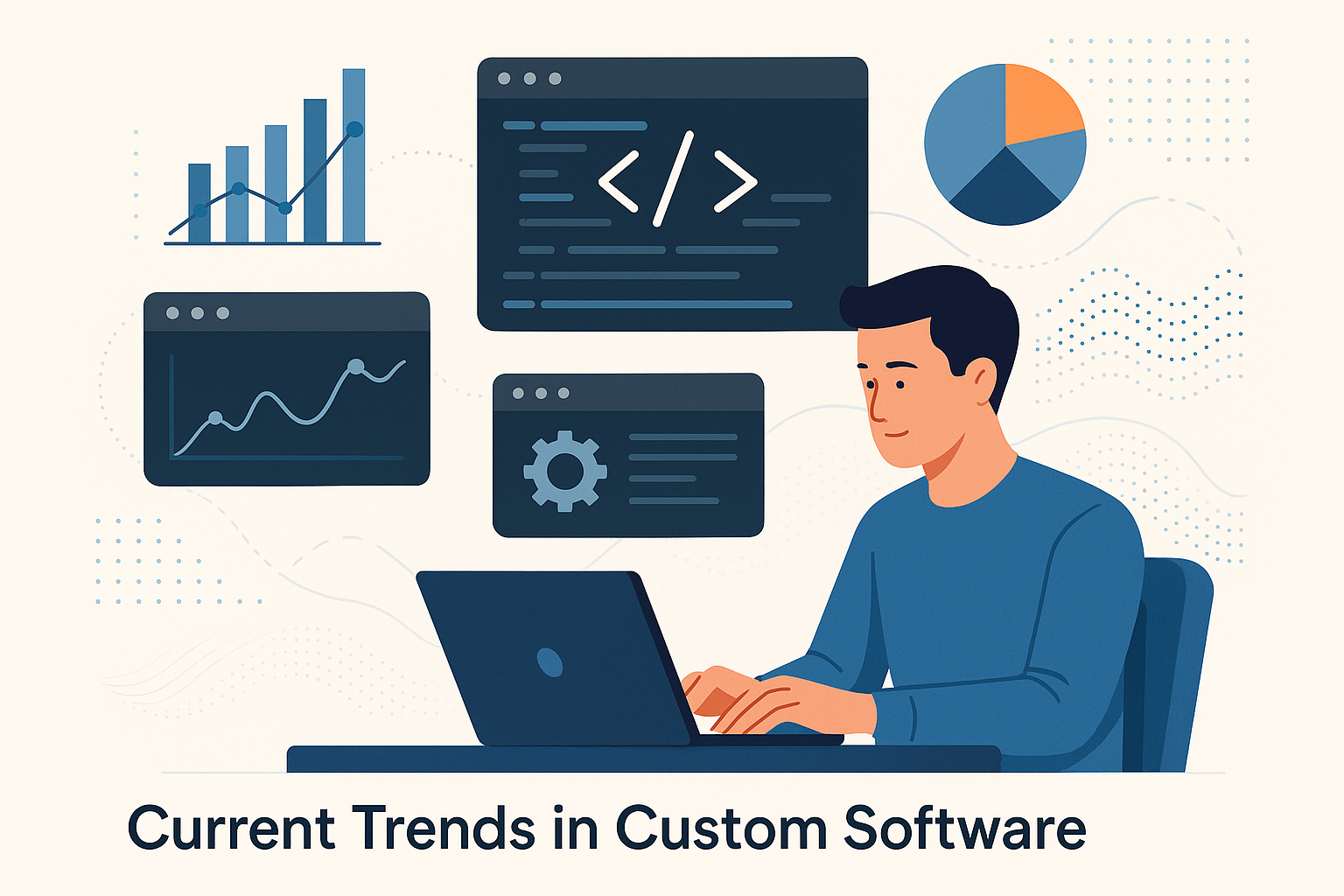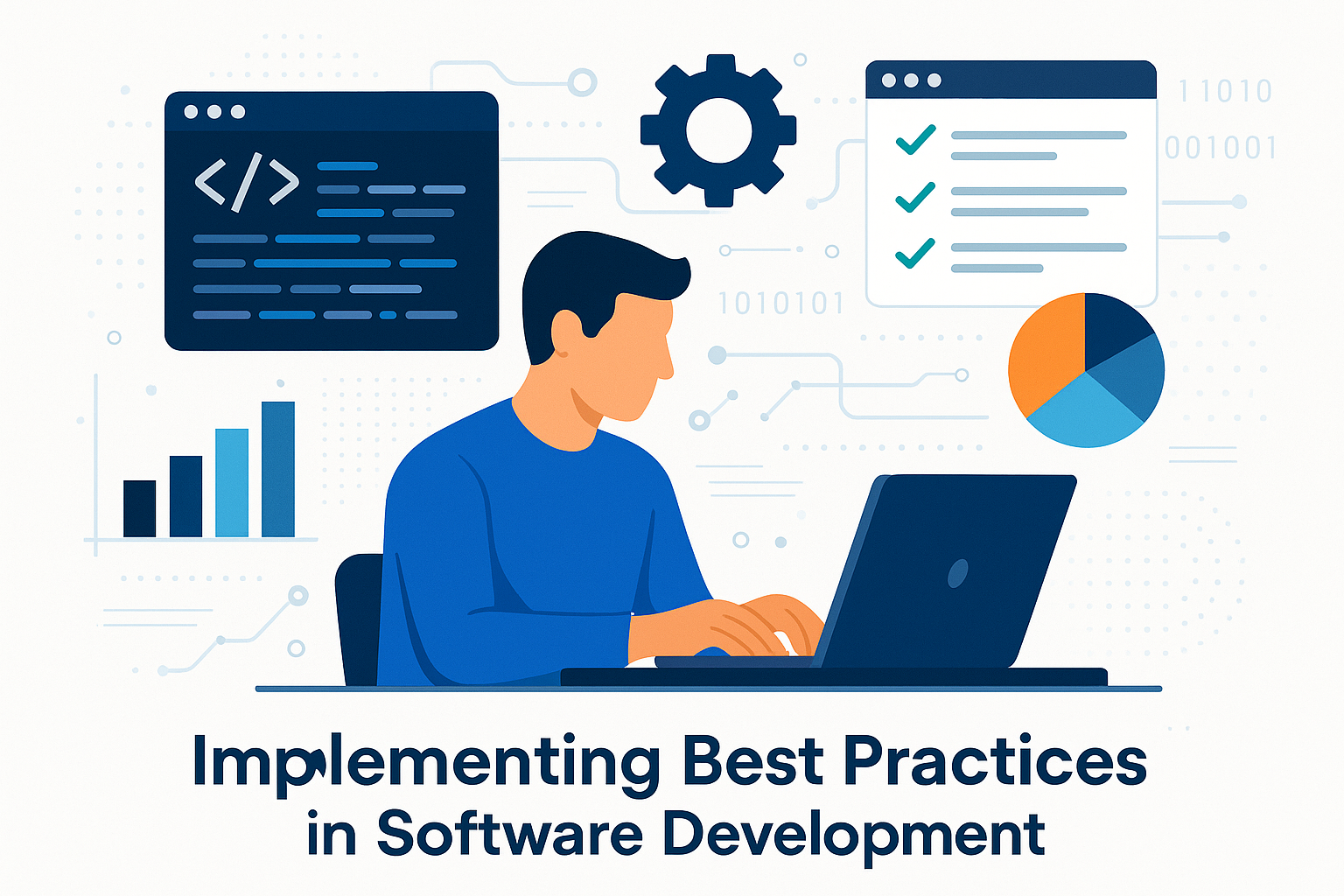In today’s rapidly evolving tech landscape, custom software has become a pivotal asset for enterprises aiming to maintain a competitive edge. However, with the fast pace of advancements in SaaS development and API integration, businesses face the challenge of keeping their software solutions both up-to-date and aligned with industry standards. This article delves into the best practices for custom software development in 2025, offering insights into current trends, effective strategies, and practical implementation steps designed to enhance enterprise applications and drive business success.
Understanding the Importance of Custom Software

Custom software provides tailored solutions that address specific business needs, offering a competitive advantage over generic alternatives. As of 2023, 89% of enterprises reported that custom software improved their business processes, highlighting its critical role in achieving operational efficiency.
To maximize the benefits of custom software, understanding the latest development trends is essential.
Current Trends in Custom Software Development

The custom software landscape is shaped by trends such as increased focus on API integration and the shift towards SaaS models. With 75% of enterprises using SaaS solutions by 2023, developers are increasingly prioritizing flexibility and scalability in their designs.
Implementing these trends effectively requires a strategic approach to development.
Implementing Best Practices in Software Development

Successful custom software projects adhere to best practices such as agile methodologies, continuous integration, and robust security measures. Implementing these practices can reduce project risks and improve delivery timelines.
With best practices in place, companies must focus on the practical aspects of development.
Practical Implementation: From Concept to Deployment
Developing custom software involves stages from concept design to deployment. Key steps include defining requirements, choosing the right technologies, and continuous testing to ensure the software meets business needs.
As these practices are implemented, businesses will naturally have questions about optimizing their software strategies.
Optimizing Software Development: Key Strategies
To optimize custom software development, businesses should focus on automation, leveraging AI for smarter insights, and fostering collaborative development environments to enhance productivity.
Having explored the core strategies, let's outline a framework for effective software development.
Effective Custom Software Development Framework
A step-by-step guide to streamline custom software development.
Define business objectives
Clearly articulate the goals your software needs to achieve.
Select the right technology stack
Choose technologies that align with your project requirements and future scalability needs.
Adopt agile methodologies
Implement agile practices to enhance flexibility and responsiveness.
Focus on API integration
Ensure seamless connectivity with existing systems through robust API integrations.
Implement continuous testing
Conduct regular testing to catch and resolve issues early in the development process.
Frequently Asked Questions
QWhat are the benefits of custom software?
QHow do I choose the right technology stack?
QWhat role does API integration play in custom software?
Conclusion
Custom software development is an evolving field with best practices that enhance efficiency and competitive advantage.
Key Takeaways
- ✓Understand the latest trends and best practices.
- ✓Implement strategic development frameworks.
- ✓Prioritize API integration and agile methodologies.
Next Steps
Evaluate your current software strategy and consider adopting the outlined best practices to stay competitive.
Contact us to learn more about how we can help you develop custom software solutions tailored to your needs.
